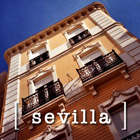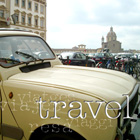
|
SEVILLA: HEART OF EMPIRE Sevilla is for many the jewel of southern Spain. A rich record of historical change and conflict, Sevilla offers a glimpse into some of Spain's most well-known ambience, with elegant public plazas, the magnficent Alcázar and the Catedral, and streets lined with orange trees. Andalucía's urban heart, the city still emits an atmosphere of times gone by, and tempts the imagination with its complicated history and its stunning variety of architectural achievements.
The oldest known human settlement of Sevilla dates to the 9th or 8th Century BC. The inhabitants of early Ispal (later Hispalis, then Sevilla) were skilled in the use of bronze, gathered their food by hunting and fishing, and traded with Phoenician, Greek and Carthaginian merchants. For centuries, the settlement prospered as a port along the Guadalquivir, but in the 2nd Century BC was taken by Carthaginian raiders. The imperial contest between Rome and Carthage made the city a target during the Second Punic War, when Baetica (now southern Spain, was captured by the Romans. The emperors Trajan and Hadrian were from Baetica, which meant days of wine and roses, or at least significant growth, trade and political clout, for the city during the first few centuries of Roman rule. Hispalis became a Christian city, when the Roman empire was converted, but was sacked by the Vandals in 428, who destroyed a number of Roman monuments. The Vandals were later ousted by the Visigoths. In the year 711, the Moors from North Africa, took the city and renamed it Ishbiliya. The Normans invaded during the first century of Muslim rule, but were rebuffed by Abderramán, and the Moors consolidated their hold over the city. In 1035, the Caliphate of Córdoba collapsed, causing instability throughout the region. Ishbiliya became an independent kingdom during this time, and even expanded its territory and influence, penetrating into the centralized domain of Al-Andalus. The Almohads moved in from North Africa, and established control of the city, naming it the administrative center of Al-Andalus.
In 1248, the long Spanish reconquest comes to Sevilla, and the city is brought under the reign of Fernando III, who integrates Sevilla into the Castilian domain of Christian territories. In 1492, the Catholic Monarchs push the Moors from their last stronghold on the Iberian Peninsula, and Sevilla passes from being a frontier fortification to a major trading port. With the Conquest of the Americas and the expansion of Spain's empire, Sevilla becomes a major port for global trade and a principal point of departure for explorers, conquistadors, and imperial reinforcements. Sevilla is Spain's gateway to the Americas. By the 16th Century, the city is among the leading capitals of the Western world, awash in gold, spices and wealth extracted from Spain's colonies. Documents are kept, recording and regulating trade with the colonies, and in the 16th Century, the Santa María de Jesús College is founded, as an institute for higher learning in order to prepare the elite for the rigors of running an empire. In 1717, however, the House of Contracts, and the Maritime Consulate, were moved to Cádiz, on the Atlantic coast, and Sevilla lost its grip on Spanish-American trade. A sharp economic decline followed, and took root. In the 19th Century, the city is visited and documented by a number of prominent travelers, giving it the reputation as a place of mystique and exotic cultural delights. There was a building boom, and the dynamism brought by the railroads, in both trade and travel. The birth of industry in Sevilla injects new life into the city's development, and a new period of urbanization is undertaken. By 1929, Sevilla rises to prominence with the Ibero-American Exposition, for which the unique and sprawling pavilions of the Plaza de España are built. With the excitement and revenue from the Expo, Sevilla undertakes another wave of improvements, installing its airport, building more roads and infrastructure, canals, irrigations systems, flood drainage and a trolley system. The 1960's are again a time of urban expansion for the city, and Sevilla stretches to its modern-day limits.
In 1992, the year that Barcelona hosted the Olympic Games, Sevilla hosted the World's Fair. The fairgrounds have been converted to serve as a series of cultural theme parks, museums and exhibitions. The city itself has embraced the 21st Century, and along with the rest of Spain seems intent on artfully straddling its storied history, while keeping its best foot forward, and promoting its own future. The center of Sevilla is itself a mix of the ages: posing as a window on a quieter, more elegant past, and juxtaposing all its beauty with the commercial crush of an urban tourist center with business of its own to attend to. [s]
For more travel listings, original narratives and destinations, consult Sentido's sister site for travel, CavaTravel.com... |
||||||||||||||||||||||||||||||||||||||||||||||||||||||
|
|||||||||||||||||||||||||||||||||||||||||||||||||||||||
















